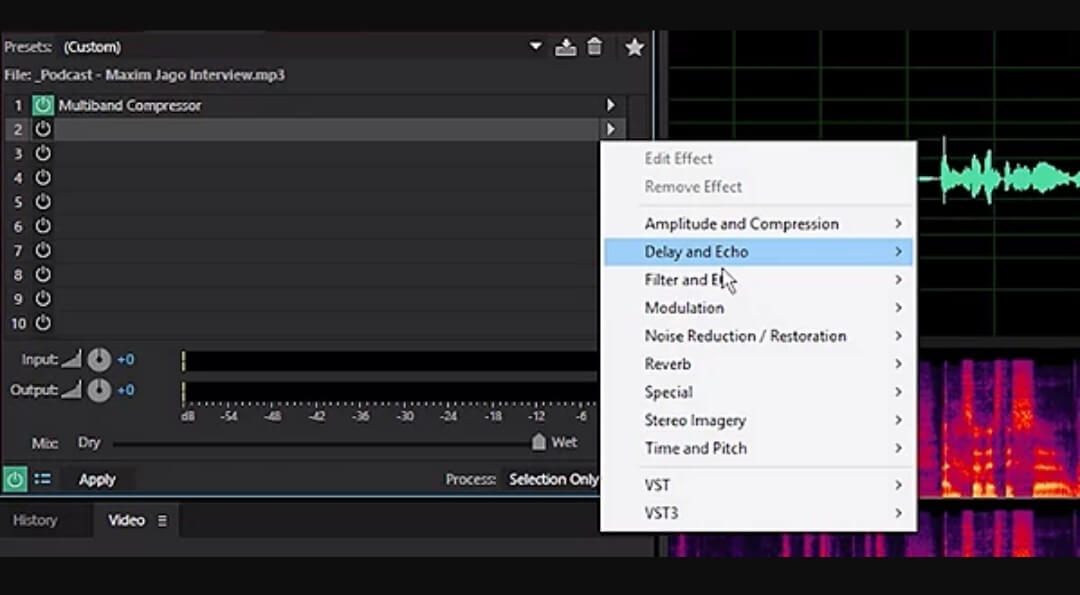
- #Adobe audition change voice pitch pro#
- #Adobe audition change voice pitch software#
- #Adobe audition change voice pitch free#
The effect has been used by composer John Boswell for his Symphony of Science and Symphony of Bang Goes The Theory (a BBC science show) mash-ups. A notable example of Auto-Tune-based pitch correction is the Cher effect, so named because producer Mark Taylor originated the effect in her 1998 hit song " Believe". Pitch correction devices became popular in the late 1990s as a distinctively electronic, vocoder-like voice effect. While pitch correction devices were initially designed to produce natural-sounding effects, producers discovered that by setting extreme parameter values, unusual effects could be obtained. Depending on the model used, various vocal effects can be added and the better quality devices can be adjusted to allow expression to remain in the music. Pitch correctors are commonly used in music studios to add the sound of vocal harmony to certain sung words or phrases without re-recording those lines again at the necessary pitches or using backup singers. While pitch correction is most associated with fixing vocal intonation errors, it can also be used to fix intonation in recorded instrumental parts such as violin, cello or trumpet.
#Adobe audition change voice pitch software#
The pitch correction software can correct any pitch errors in the singing without the need for overdubbing or re-recording.

The use of pitch correction speeds up the recording process, because singers do not need to keep singing a song or vocal line and re-recording it until the pitches are correct. The most common use of pitch correctors is to fix wrong intonation (tuning) of notes sung by vocalists in popular music sound recordings. Uses Screenshot of Audacity showing spectrograms of an audio clip with portamento (upper panel) and the same clip after applying pitch correction, showing frequencies clamped to discrete values (lower panel) Pitch correction In the Linux FOSS community, Autotalent and Zita-AT1 offer this functionality.
#Adobe audition change voice pitch free#
A free VST plugin known as GSnap can also be used to get the same effect. There is also a large stompbox pedal that provides pitch correction in a small device that could be used at a show by plugging the vocal microphone into the pedal and then sending the signal to the PA system. It is also available in the form of rackmount hardware, such as the TC-Helicon VoiceOne. MorphTune also provides this functionality.
#Adobe audition change voice pitch pro#
Pitch correction is now a common feature in digital audio editing software, having first appeared as a Pro Tools plugin and now being found in products such as Apple GarageBand, Apple Logic Pro, Adobe Audition, FL Studio, Digital Performer, and Steinberg Cubase.

Īuto-Tune is still widely used, as are other pitch-correction algorithms including Celemony's Direct Note Access which allows adjustment of individual notes in a polyphonic audio signal, and Celemony's Melodyne. This replaced slow studio techniques with a real-time process that could also be used in live performance. Pitch correction was relatively uncommon before 1997, when Antares Audio Technology's Auto-Tune Pitch Correcting Plug-In was introduced. Prior to the development of electronic pitch correction devices, there was no way to make " real time" corrections to a live vocal performance in a concert (although lip-syncing was used in some cases where a performer was not able to sing adequately in live performances).

By the late 70s, engineers were fixing parts using the Eventide Harmonizer. Prior to the invention of pitch correction, errors in vocal intonation in recordings could only be corrected by re-recording the entire song (in the early era of recording) or, after the development of multitrack recording, by overdubbing the incorrect vocal pitches by re-recording those specific notes or sections. The widest use of pitch corrector devices is in Western popular music on vocal lines. Pitch correction first detects the pitch of an audio signal (using a live pitch detection algorithm), then calculates the desired change and modifies the audio signal accordingly. Pitch correction devices do this without affecting other aspects of its sound. Pitch correction is an electronic effects unit or audio software that changes the intonation (highness or lowness in pitch) of an audio signal so that all pitches will be notes from the equally tempered system (i.e., like the pitches on a piano). Vocal pitch editing using VariAudio on Cubase6


 0 kommentar(er)
0 kommentar(er)
